Caroline Leavitt's Blog, page 70
July 25, 2014
Miranda Beverly-Whittemore talks about Bittersweet, singing off-key, growling monster books, and so much more
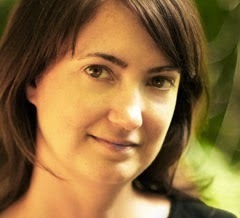
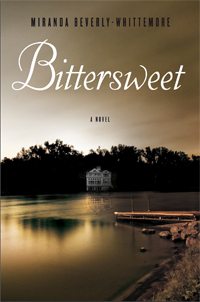
Come on, who hasn't read and worshipped BITTERSWEET, Miranda Beverly-Whittemore's astonishing New York Times bestseller about outsiders and class. She's also the author of The Effects of Light, and Set Me Free, which one the Janet Heidinger Kafka Prize for the best book of fiction by an American woman published in 2007. She's also the winner of the Crazyhorse Fiction Prize, and I'm so honored to host her here. Thank you so much, Miranda.
What I loved so much about Bittersweet was that you melded both a Gatsbyish sense of the outsider yearning to be inside a rarified world, and also an encroaching tension and menace that had me gripping some pages so tightly, I almost tore them. So I want to ask, how did this novel spark
Oh thank you so much! Long before I started to think about Bittersweet in a concrete way, probably long before I started writing books at all, I fell in love with a certain kind of book, and, as I started to read more widely, I realized that every time I read a book with the same thematic premise—an outsider longing to get “in”—I felt a kind of electric recognition. I found myself obsessed with/ in love with this central notion, and the push/pull of wanting the outsider desperately to get in while also knowing they’re going to have to pay for belonging. I’m talking about books like The Great Gatsby; The Line of Beauty; Brideshead Revisited; Atonement; The Emporer’s Children; The Secret History. Perhaps you’ll notice that in all those books, the outsider is a young man, so I suppose I believed that I might have something new to add to the genre with the creation of Mabel Dagmar.
Because I usually come at novels from a few different angles, and all angles to sing for me in order to want to actually write the damn thing, I also knew that I wanted to write about the place where this book is set, which is a real place I’ve been going to my whole life and love with all my heart. It’s funny to me that I could turn such a benign spot into something out of a dark fairy tale, but it’s true that the sense of menace the book might hold didn’t become clear to me until I realized that’s where this story was set.
Because this novel is so artfully constructed, I want to ask, was there ever a moment when you had no idea what you were doing, or you worried that you had lost control of it?
I find that no matter how well planned or plotted a book is, there is always that moment when it turns into a growling monster above me and I wonder what I’ve wrought. I didn’t set out to write a “thriller” per se, and at first, the book kept crawling into that territory. Once I relaxed a bit and stopped trying to reel it back in, I allowed myself to understand that that thriller aspect of the book was a strength, and not something to fight against.
What do you think writing this novel taught you?
I come from a literary fiction background, which means I’ve always felt pretty self-conscious about my propensity for big plot. Because I’d had a hard time selling a couple of books before I wrote this one, I was feeling a bit more adventurous (…or desperate), and I realized that I wanted to try my hand at writing a book with polished sentences that also went for it in terms of plot. I decided to embrace the idea that my next novel could be both commercial and literary, and in doing so, adopted the belief that there was someone out there who would want to (and know how to) market and sell a book with both elements in it.
I suppose that in embracing my strengths as a novelist (and not feeling as though I had to kind of downplay them anymore in order to be “cool”), I remembered how much fun it can be to write a book. I know that’s not really cool to say either—we love the idea that writing a book is all blood and guts (and certainly, there were real wrestling matches I had with Bittersweet)—but I’ll be honest that for the most part, writing this book was a real pleasure. A friend of mine said that she felt like she could hear me laughing as she read, and that made me so happy to hear. I loved reconnecting with that pleasure principle, and I think readers are as well.
Without giving anything away, I want to comment on the brilliant fast forward at the end. At what point did you know you were going to structure the novel that way?
I always knew this tale was being told from a great distance. The space between the immediacy of the action and the telling of it was how I came to know who Mabel was, because so much of this novel operates based on how she chooses to present the facts.
That said, the ending has changed a lot; this is the third version of that “fast forward” ending. The first version was much more dystopian, and my agent encouraged me to rethink it before we sent it out. So then I went back to the drawing board and ended up with something close to what we have now, but—without giving anything away—the ending was much less satisfying. I owe my editor for being the one who pointed this out, and all before she became my editor, after she’d spent about 12 hours with the book. She contacted my agent that she loved the novel and had dreamed about the setting the previous night, but that she disagreed with my ending, and would be willing to take another look at the book if I wanted to revise. So I spent the next two days rewriting the last fifteen pages or so. Up until that point, the ending had never felt quite right to me, even though I knew that tonally it wanted to be told from a fast forward. Once I got Christine’s notes, not only did I know that she had to be my editor, but I realized I’d finally discovered how to end this book.
What’s your writing life like these days?
Because I had such a hard time selling another book after my second novel, Set Me Free, was published in 2007, I promised myself that if/when I sold another book, I’d devote myself for a year to the cause of getting the word out about it. I had a clear sense that Bittersweet might be my “last chance” and I didn’t want to squander it. There have been many upsides to that decision, but that downside of it, of course, is that I’ve had to take a major break from writing in a daily way in order to do all the social media and outreach I’ve agreed to. I’m thrilled that I just sold my next novel, JUNE, and will be writing it over the course of the next year, and it’ll be interesting to see what the shift back into daily writing will be like. My family life will change too, because for the first time since my son was born five years ago, he’ll be in school five days a week. I’m looking forward to hunkering down back into language and closing down the social channels I’ve opened up this past year, or at least putting them on pause for a bit.
What’s obsessing you now and why?
I’ve been working a lot on being in the moment. Maybe it has something to do with finding myself, all of a sudden, with a kindergartener. It just seems like time is slipping by so quickly, so I’m putting down the smartphone and computer and spending time playing or talking with the kiddo, appreciating the parts of the world, and people in it, that I’m lucky to know and love. I’m also on a declutter kick, obsessing about getting things out of my house. That’s something else that happens when you have a kindergartener: you realize you have accumulated a LOT of crap.
What question didn’t I ask that I should have?
I always love to hear about what a writer loves that has nothing to do with writing. So my answer to that question is: cooking (I’m a big fan of starting with a recipe and then diverging from it halfway through); sleeping (I can sleep nine or ten hours a night if my schedule allows); being with my family (I loathe that we are spread out so far across the planet); and singing off key to musical theater (latest fave: Matilda.)
Published on July 25, 2014 10:32
July 19, 2014
My backlist is coming! My backlist is coming!
<!-- /* Font Definitions */ @font-face {font-family:"Cambria Math"; panose-1:2 4 5 3 5 4 6 3 2 4; mso-font-charset:0; mso-generic-font-family:auto; mso-font-pitch:variable; mso-font-signature:-536870145 1107305727 0 0 415 0;} @font-face {font-family:Times-Roman; panose-1:0 0 0 0 0 0 0 0 0 0; mso-font-alt:Times; mso-font-charset:77; mso-generic-font-family:roman; mso-font-format:other; mso-font-pitch:auto; mso-font-signature:3 0 0 0 1 0;} /* Style Definitions */ p.MsoNormal, li.MsoNormal, div.MsoNormal {mso-style-priority:99; mso-style-unhide:no; mso-style-qformat:yes; mso-style-parent:""; margin:0in; margin-bottom:.0001pt; line-height:200%; mso-pagination:widow-orphan; mso-layout-grid-align:none; text-autospace:none; font-size:12.0pt; font-family:"Times-Roman","serif"; mso-fareast-font-family:"Times New Roman"; mso-bidi-font-family:Times-Roman;} p.MsoHeader, li.MsoHeader, div.MsoHeader {mso-style-priority:99; mso-style-unhide:no; mso-style-link:"Header Char"; margin:0in; margin-bottom:.0001pt; line-height:200%; mso-pagination:widow-orphan; mso-layout-grid-align:none; text-autospace:none; font-size:12.0pt; font-family:"Times-Roman","serif"; mso-fareast-font-family:"Times New Roman"; mso-bidi-font-family:Times-Roman;} p.MsoFooter, li.MsoFooter, div.MsoFooter {mso-style-priority:99; mso-style-unhide:no; mso-style-link:"Footer Char"; margin:0in; margin-bottom:.0001pt; line-height:200%; mso-pagination:widow-orphan; mso-layout-grid-align:none; text-autospace:none; font-size:12.0pt; font-family:"Times-Roman","serif"; mso-fareast-font-family:"Times New Roman"; mso-bidi-font-family:Times-Roman;} span.HeaderChar {mso-style-name:"Header Char"; mso-style-priority:99; mso-style-unhide:no; mso-style-locked:yes; mso-style-link:Header; mso-ansi-font-size:12.0pt; mso-bidi-font-size:12.0pt; font-family:"Times-Roman","serif"; mso-ascii-font-family:Times-Roman; mso-hansi-font-family:Times-Roman; mso-bidi-font-family:Times-Roman;} span.FooterChar {mso-style-name:"Footer Char"; mso-style-priority:99; mso-style-unhide:no; mso-style-locked:yes; mso-style-link:Footer; mso-ansi-font-size:12.0pt; mso-bidi-font-size:12.0pt; font-family:"Times-Roman","serif"; mso-ascii-font-family:Times-Roman; mso-hansi-font-family:Times-Roman; mso-bidi-font-family:Times-Roman;} .MsoChpDefault {mso-style-type:export-only; mso-default-props:yes; font-size:10.0pt; mso-ansi-font-size:10.0pt; mso-bidi-font-size:10.0pt;} @page WordSection1 {size:8.5in 11.0in; margin:1.25in 1.0in 1.25in 1.0in; mso-header-margin:.5in; mso-footer-margin:.5in; mso-page-numbers:1; mso-paper-source:0;} div.WordSection1 {page:WordSection1; mso-endnote-numbering-style:arabic;} </style><br /><div class="MsoNormal"><br />I’m really excited that my backlist is coming back onto ebooks, from the wonderful Dzanc Books and Open Road media, so I just want to tell you a little about the books, all available as e-books <i>wherever </i>e-books are sold (that means Kobo, Nook, etc.) And you can pre-order them! The book photos were all done by the wonderful Jill Dodds and the books will be out August 5th!</div><div class="MsoNormal"><br /></div><div class="separator" style="clear: both; text-align: center;"><i></i></div><div class="separator" style="clear: both; text-align: center;"><i><a href="http://1.bp.blogspot.com/-8x5YMhY9rFs..." imageanchor="1" style="margin-left: 1em; margin-right: 1em;"><img border="0" src="http://1.bp.blogspot.com/-8x5YMhY9rFs..." height="320" width="207" /></a></i></div><div class="MsoNormal"><i><br />Meeting Rozzy Halfway</i> is my first novel and it made me famous and it came about by mistake, almost. I never intended to be a novelist. I was going to be a short story writer, and I could have papered my walls with rejections. <i>Meeting Rozzy Halfway</i> is about two sisters growing up in Boston, tightly bound together until one of them begins to slowly go mad. I wrote the story and sent it off to <i>Redbook </i>magazine’s Young Writers Contest (I was really young), expecting nothing. Months later, I was coming home from another terrible job I was fired from (this one was working at a puzzle factory that made obscene puzzles) when I saw the big brown envelope that I knew meant rejection. I tore it in a million pieces, spreading it like confetti on my front stoop. <br /><br />And then I happened to see one word: congratulations. I leaped down and put all the pieces together. it turned out I won First Prize! They wanted the story! And publishers began calling! Rozzy made me known. I was living in Pittsburgh at the time, and I was flown to NYC to be interviewed by <i>Publisher’s Weekly</i>. I was on TV and radio and feted and raved about in <i>the Washington Post, The New York Times, The Kansas City Star</i> and just about every paper on the planet. I even had a film option from Paramount. I thought my career would always be like that! (But that's another story, one of publishers going out of business, sales forces leaving, and a final rescue by my adored publisher, Algonquin Books.</div><div class="MsoNormal"><br /></div><div class="separator" style="clear: both; text-align: center;"><a href="http://1.bp.blogspot.com/-is52j14LDE8..." imageanchor="1" style="margin-left: 1em; margin-right: 1em;"><img border="0" src="http://1.bp.blogspot.com/-is52j14LDE8..." height="320" width="207" /></a></div><div class="MsoNormal"><br />My second novel coming out is called <i>Lifelines </i>and it’s really a novel about identity, and the fight between a Russian mother, who may or may not be psychic, and the daughter she is sure has inherited her gift. <i>The Los Angeles Times</i> commented on my “strong and memorable characters” and said the book was “excellent.”Do I believe in gifts like that? I admit I sort of do and I keep two decks of Tarot cards in my office and pull three cards every day. This publisher, who also published Rozzy, went out of business. Sigh.</div><div class="MsoNormal"><br /></div><div class="MsoNormal"><br /></div><div class="separator" style="clear: both; text-align: center;"><a href="http://4.bp.blogspot.com/-3yNXC9gqopI..." imageanchor="1" style="margin-left: 1em; margin-right: 1em;"><img border="0" src="http://4.bp.blogspot.com/-3yNXC9gqopI..." height="320" width="207" /></a></div><div class="MsoNormal"><br /></div><div class="MsoNormal">My third novel <i>Family</i> is about the feeling we all have--that someone we are orphans, that we can never really belong to anyone. For this one, t<i>he New York Times </i>said, “There is no denying this author’s talent.” I chose the name because I was thinking about the nature of family, but also because there was this great old TV drama with the same name, and being superstitious, I thought it would bring me good luck. <i>Family </i>is the story of Nick Austin, who grows up in an orphanage and is both yearning for and terrified of love. He has two families, and one teenage daughter who discovers what her father is doing. (And yes, this publisher, Arbor House, went out of business two weeks before the book was due to come out.)</div><div class="MsoNormal"><br /></div><div class="separator" style="clear: both; text-align: center;"><a href="http://3.bp.blogspot.com/-kiRyH2nsxxQ..." imageanchor="1" style="margin-left: 1em; margin-right: 1em;"><img border="0" src="http://3.bp.blogspot.com/-kiRyH2nsxxQ..." height="320" width="207" /></a></div><div class="MsoNormal"><br /></div><i> </i><br /><div class="MsoNormal"><i>Into Thin Air </i>is the book I call my Madonna book, only because for three whole days Madonna was considering optioning the book as her directorial debut--then, of course, she went on tour instead. But the option was picked up, a script was written, and then the director ran away wit the producer and that was that. Library Journal called it one of the best books of the year. and compared me to Anne Tyler<span style="mso-spacerun: yes;"> </span>It’s the story of Lee Archer a young terrified woman who marries a high school boy sweet on her to escape her family, and finds herself pregnant. After delivering her baby in a hospital, she vanishes into another life, abandoning her young husband and her baby.</div><div class="MsoNormal"><br /></div><div class="MsoNormal">These novels are my babies. I hope you’ll read and love them, and help them take their first steps out into the world again. And if you pre-order, I'll buy you your own planet! </div>
Published on July 19, 2014 15:31
July 15, 2014
Sarah McCoy, Jenna Blum and Erika Robuck talk about their new anthology GRAND CENTRAL, glamming it up for the launch, Modcloth, writing, and so much more
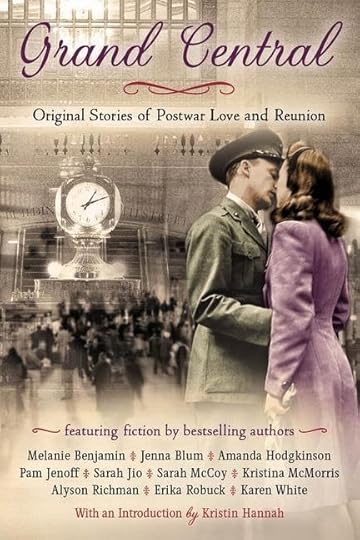
Ok, here's the truth. I'm friends with all of these amazing women and the only thing I'd like more than hosting them on my blog would be to hang out with them around dinner and toast them. They're all part of Grand Central: Original Stories of Postwar Love and Reunion. I want to mention the other amazing women in this anthology, too: Sarah Jio, Melanie Benjamin, Alyson Richman, Karen White, Carla Mercer-Meyer, Amanda Hodgkinson, Pam Jenoff, Kristina McMorris. Thank you so much, Jenna, Sarah and Erika for being here--and for everything.
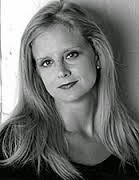 JENNA BLUM is the New York Times and # 1 international bestselling author of novels Those Who Save Us (Harcourt, 2004) and The Stormchasers (Dutton, 2010) and novella “The Lucky One” in the postwar anthology GRAND CENTRAL (Penguin, 2014). Jenna is also one of Oprah’s Top Thirty Women Writers. Jenna’s debut novel Those Who Save Us is a New York Times and international bestseller; in 2011 it was the # 1 best-selling novel in Holland. Those Who Save Us is also a Boston Globe bestseller and the 2005 winner of the Ribalow Prize, adjudged by Elie Wiesel.
JENNA BLUM is the New York Times and # 1 international bestselling author of novels Those Who Save Us (Harcourt, 2004) and The Stormchasers (Dutton, 2010) and novella “The Lucky One” in the postwar anthology GRAND CENTRAL (Penguin, 2014). Jenna is also one of Oprah’s Top Thirty Women Writers. Jenna’s debut novel Those Who Save Us is a New York Times and international bestseller; in 2011 it was the # 1 best-selling novel in Holland. Those Who Save Us is also a Boston Globe bestseller and the 2005 winner of the Ribalow Prize, adjudged by Elie Wiesel.Jenna’s critically acclaimed and reader-beloved 2nd novel, The Stormchasers, which Jenna researched by chasing tornadoes for six years with stormchase company Tempest Tours, is also a Dutch bestseller, a Boston Globe bestseller, a Target Emerging Author Pick, a BORDERS bestseller, and has been featured in French Elle.
I had the BEST TIME ever being on a panel with Jenna, where we bonded over boots and laughed more than is probably legal.

SARAH McCOY is author of the New York Times, USA Today, and international bestseller The Baker’s Daughter , a 2012 Goodreads Choice Award Best Historical Fiction nominee; the novella “The Branch of Hazel,” in Grand Central ; The Time It Snowed in Puerto Rico ; and The Mapmaker’s Children (forthcoming from Crown, May 2015). Her work has been featured in Real Simple, The Millions, Huffington Post, and other publications. Sarah also taught me everything I know about how to pack three weeks of event clothes into one carry-on suitcase, and which boots are the coolest.
 ERIKA ROBUCK
self-published her first novel, RECEIVE ME FALLING. Her novel, HEMINGWAY’S GIRL (NAL/Penguin), was a Target Emerging Author Pick, a Vero Beach Bestseller, and has sold in two foreign markets to date. CALL ME ZELDA (NAL/Penguin) made the Southern Independent Booksellers Bestseller list, and is a Target Recommended Read. FALLEN BEAUTY was released on March 4th, and she is a contributor to GRAND CENTRAL (June 2014, Berkley/Penguin), a short story anthology set at Grand Central Terminal in New York, following World War II. Her forthcoming novel, THE HOUSE OF HAWTHORNE (NAL/Penguin), will be published in May of 2015.
ERIKA ROBUCK
self-published her first novel, RECEIVE ME FALLING. Her novel, HEMINGWAY’S GIRL (NAL/Penguin), was a Target Emerging Author Pick, a Vero Beach Bestseller, and has sold in two foreign markets to date. CALL ME ZELDA (NAL/Penguin) made the Southern Independent Booksellers Bestseller list, and is a Target Recommended Read. FALLEN BEAUTY was released on March 4th, and she is a contributor to GRAND CENTRAL (June 2014, Berkley/Penguin), a short story anthology set at Grand Central Terminal in New York, following World War II. Her forthcoming novel, THE HOUSE OF HAWTHORNE (NAL/Penguin), will be published in May of 2015.Erika taught me how to hand-sell our books at a book fest, even if it meant waving them in the air while seeming to dance.
So what sparked the idea for this book?
Sarah: <!-- /* Font Definitions */ @font-face {font-family:Times; panose-1:2 0 5 0 0 0 0 0 0 0; mso-font-charset:0; mso-generic-font-family:auto; mso-font-pitch:variable; mso-font-signature:3 0 0 0 1 0;} @font-face {font-family:"MS 明朝"; mso-font-charset:78; mso-generic-font-family:auto; mso-font-pitch:variable; mso-font-signature:-536870145 1791491579 18 0 131231 0;} @font-face {font-family:"Cambria Math"; panose-1:2 4 5 3 5 4 6 3 2 4; mso-font-charset:0; mso-generic-font-family:auto; mso-font-pitch:variable; mso-font-signature:-536870145 1107305727 0 0 415 0;} @font-face {font-family:Cambria; panose-1:2 4 5 3 5 4 6 3 2 4; mso-font-charset:0; mso-generic-font-family:auto; mso-font-pitch:variable; mso-font-signature:-536870145 1073743103 0 0 415 0;} @font-face {font-family:Georgia; panose-1:2 4 5 2 5 4 5 2 3 3; mso-font-charset:0; mso-generic-font-family:auto; mso-font-pitch:variable; mso-font-signature:647 0 0 0 159 0;} /* Style Definitions */ p.MsoNormal, li.MsoNormal, div.MsoNormal {mso-style-unhide:no; mso-style-qformat:yes; mso-style-parent:""; margin:0in; margin-bottom:.0001pt; mso-pagination:widow-orphan; font-size:12.0pt; font-family:Cambria; mso-ascii-font-family:Cambria; mso-ascii-theme-font:minor-latin; mso-fareast-font-family:"MS 明朝"; mso-fareast-theme-font:minor-fareast; mso-hansi-font-family:Cambria; mso-hansi-theme-font:minor-latin; mso-bidi-font-family:"Times New Roman"; mso-bidi-theme-font:minor-bidi;} .MsoChpDefault {mso-style-type:export-only; mso-default-props:yes; font-family:Cambria; mso-ascii-font-family:Cambria; mso-ascii-theme-font:minor-latin; mso-fareast-font-family:"MS 明朝"; mso-fareast-theme-font:minor-fareast; mso-hansi-font-family:Cambria; mso-hansi-theme-font:minor-latin; mso-bidi-font-family:"Times New Roman"; mso-bidi-theme-font:minor-bidi;} @page WordSection1 {size:8.5in 11.0in; margin:1.0in 1.25in 1.0in 1.25in; mso-header-margin:.5in; mso-footer-margin:.5in; mso-paper-source:0;} div.WordSection1 {page:WordSection1;} </style><span style="font-family: Times,"Times New Roman",serif;"><span style="font-size: small;"><span style="color: #1a1a1a;"> "The Branch of Hazel” is actually a spin off from story from one of the characters in <i>THE BAKER’S DAUGHTER</i>. Elsie’s sister, Hazel, was a Lebensborn Program mother and throughout my national and international book tour, the reader crowds were consistently asking me for more Hazel. They wanted to know what really happened to her. They wanted more information about the Lebensborn Program— the Nazi program that bred pedigreed, young German women to SS officers of perfect Aryan lineage in attempt to create a “master” race. As soon as the war ended, these once lauded women were then shunned. Their perfect children were labeled shameful bastards of a monstrous initiative. The girls were typically between the ages of 17-24 so they were just at the beginning of their lives. How do you move on from such a past— can you? That was the question that haunted me for Hazel and all the Lebensborn women. This novella was sparked and fueled by their real-life, untold accounts. </span></span></span></div><span style="font-family: Times,"Times New Roman",serif;"><span style="font-size: small;"><br /></span></span><span style="font-family: Times,"Times New Roman",serif;"><span style="font-size: small;"><b>Erika:</b><span style="color: #1a1a1a;"> Kristina McMorris called me and said she and Sarah Jio had brainstormed the idea, and would I be interested in joining? I was honored to be included. We chose the date and time based upon all of the authors’ experience with the time period and our shared love of the iconic New York location.</span></span></span><br /><div class="MsoNormal"><span style="font-family: Times,"Times New Roman",serif;"><span style="font-size: small;"><br /></span></span></div><div class="MsoNormal"><span style="font-family: Times,"Times New Roman",serif;"><span style="font-size: small;"><b><span style="color: #1a1a1a;">Jenna:</span></b><span style="color: #1a1a1a;"> Ask Kristina McMorris. She is the genius who thought of it! The story goes that Kristina and Sarah Jio, another GRAND CENTRAL girl, were having dinner in the Northwest where they live, and Kristina said, “Wouldn’t it be great if we got a bunch of us WW2 author gals together and did an anthology of stories all set in Grand Central Terminal on the same day just after WW2?” And Sarah said, Sure, that’d be great, in that let’s-do-lunch kind of way. The difference being, Kristina actually made it happen. She corralled all us GRAND CENTRAL girls via email and Facebook, and we all said yes, and she and her agent pitched it, and Berkeley/Penguin bought it very quickly. That’s Kristina’s story, or my version of it, and I’m sticking to it. Also, if you’ve ever met Kristina, you know she has great personal charm AND she used to be a wedding planner, so none of us ever had a chance. </span></span></span></div><div class="MsoNormal"><span style="font-family: Times,"Times New Roman",serif;"><span style="font-size: small;"><br /></span></span></div><div class="MsoNormal"><span style="font-family: Times,"Times New Roman",serif;"><span style="font-size: small;"><b>What </b> </span></span><style><!-- /* Font Definitions */ @font-face {font-family:Times; panose-1:2 0 5 0 0 0 0 0 0 0; mso-font-charset:0; mso-generic-font-family:auto; mso-font-pitch:variable; mso-font-signature:3 0 0 0 1 0;} @font-face {font-family:"MS 明朝"; mso-font-charset:78; mso-generic-font-family:auto; mso-font-pitch:variable; mso-font-signature:-536870145 1791491579 18 0 131231 0;} @font-face {font-family:"Cambria Math"; panose-1:2 4 5 3 5 4 6 3 2 4; mso-font-charset:0; mso-generic-font-family:auto; mso-font-pitch:variable; mso-font-signature:-536870145 1107305727 0 0 415 0;} @font-face {font-family:Cambria; panose-1:2 4 5 3 5 4 6 3 2 4; mso-font-charset:0; mso-generic-font-family:auto; mso-font-pitch:variable; mso-font-signature:-536870145 1073743103 0 0 415 0;} /* Style Definitions */ p.MsoNormal, li.MsoNormal, div.MsoNormal {mso-style-unhide:no; mso-style-qformat:yes; mso-style-parent:""; margin:0in; margin-bottom:.0001pt; mso-pagination:widow-orphan; font-size:12.0pt; font-family:Cambria; mso-ascii-font-family:Cambria; mso-ascii-theme-font:minor-latin; mso-fareast-font-family:"MS 明朝"; mso-fareast-theme-font:minor-fareast; mso-hansi-font-family:Cambria; mso-hansi-theme-font:minor-latin; mso-bidi-font-family:"Times New Roman"; mso-bidi-theme-font:minor-bidi;} .MsoChpDefault {mso-style-type:export-only; mso-default-props:yes; font-family:Cambria; mso-ascii-font-family:Cambria; mso-ascii-theme-font:minor-latin; mso-fareast-font-family:"MS 明朝"; mso-fareast-theme-font:minor-fareast; mso-hansi-font-family:Cambria; mso-hansi-theme-font:minor-latin; mso-bidi-font-family:"Times New Roman"; mso-bidi-theme-font:minor-bidi;} @page WordSection1 {size:8.5in 11.0in; margin:1.0in 1.25in 1.0in 1.25in; mso-header-margin:.5in; mso-footer-margin:.5in; mso-paper-source:0;} div.WordSection1 {page:WordSection1;} </style><span style="font-family: Times,"Times New Roman",serif;"><span style="font-size: small;"><b><span style="color: #1a1a1a;">I especially loved in this book was the way the pages breathed history. What do you think these stories can tell us today about war, love, and reunion? </span></b></span></span></div><div class="MsoNormal"><span style="font-family: Times,"Times New Roman",serif;"><span style="font-size: small;"><b><span style="color: #1a1a1a;"> <style><!-- /* Font Definitions */ @font-face {font-family:Times; panose-1:2 0 5 0 0 0 0 0 0 0; mso-font-charset:0; mso-generic-font-family:auto; mso-font-pitch:variable; mso-font-signature:3 0 0 0 1 0;} @font-face {font-family:"MS 明朝"; mso-font-charset:78; mso-generic-font-family:auto; mso-font-pitch:variable; mso-font-signature:-536870145 1791491579 18 0 131231 0;} @font-face {font-family:"Cambria Math"; panose-1:2 4 5 3 5 4 6 3 2 4; mso-font-charset:0; mso-generic-font-family:auto; mso-font-pitch:variable; mso-font-signature:-536870145 1107305727 0 0 415 0;} @font-face {font-family:Cambria; panose-1:2 4 5 3 5 4 6 3 2 4; mso-font-charset:0; mso-generic-font-family:auto; mso-font-pitch:variable; mso-font-signature:-536870145 1073743103 0 0 415 0;} /* Style Definitions */ p.MsoNormal, li.MsoNormal, div.MsoNormal {mso-style-unhide:no; mso-style-qformat:yes; mso-style-parent:""; margin:0in; margin-bottom:.0001pt; mso-pagination:widow-orphan; font-size:12.0pt; font-family:Cambria; mso-ascii-font-family:Cambria; mso-ascii-theme-font:minor-latin; mso-fareast-font-family:"MS 明朝"; mso-fareast-theme-font:minor-fareast; mso-hansi-font-family:Cambria; mso-hansi-theme-font:minor-latin; mso-bidi-font-family:"Times New Roman"; mso-bidi-theme-font:minor-bidi;} .MsoChpDefault {mso-style-type:export-only; mso-default-props:yes; font-family:Cambria; mso-ascii-font-family:Cambria; mso-ascii-theme-font:minor-latin; mso-fareast-font-family:"MS 明朝"; mso-fareast-theme-font:minor-fareast; mso-hansi-font-family:Cambria; mso-hansi-theme-font:minor-latin; mso-bidi-font-family:"Times New Roman"; mso-bidi-theme-font:minor-bidi;} @page WordSection1 {size:8.5in 11.0in; margin:1.0in 1.25in 1.0in 1.25in; mso-header-margin:.5in; mso-footer-margin:.5in; mso-paper-source:0;} div.WordSection1 {page:WordSection1;} </style></span></b></span></span></div><span style="font-family: Times,"Times New Roman",serif;"><span style="font-size: small;"><span style="color: #1a1a1a;"><b><br />Jenna:</b> I have to laugh about this because my story is the sole novella in the collection that isn’t about love and reunion in the traditional sense; it’s about a man trying to outrun his unimaginably anguishing past. But I suppose that really is about love, isn’t it?, its lasting and pervasive effects, which can assume the form of deepest grief. And now that I think about it, all the novellas in GRAND CENTRAL are this way: about imperfect, fragile, damaged, enduring love—of men and women, children, friends—and how it survives even death.</span></span></span><br /><div class="MsoNormal"><span style="font-family: Times,"Times New Roman",serif;"><span style="font-size: small;"><br /></span></span></div><div class="MsoNormal"><span style="font-family: Times,"Times New Roman",serif;"><span style="font-size: small;"><span style="color: #1a1a1a;"><b>Erika:</b> When I travel, I often gaze around air and rail terminals wondering what has brought each person to the station, and where they are going. I love seeing people embrace after separations, and ponder those who return alone. There is a certain magic in realizing our connections to others, even when it is not immediately clear how we are joined. In this time in history, like no other, our county was united in a common goal. Like Karen White has said, this generation was called “The Greatest Generation” for a reason. It was a pleasure to spend time telling their stories. </span></span></span></div><div class="MsoNormal"><span style="font-family: Times,"Times New Roman",serif;"><span style="font-size: small;"><span style="color: #1a1a1a;"><br /><b>Sarah:</b> What</span></span><span style="font-size: small;"><span style="color: #1a1a1a;"> I cherish about this collection and what my fellow authoresses have created that I don’t believe could be achieved in a one-author novel is the vast range of story perspectives. Each of our novellas highlights a little known or nearly forgotten aspect of World War II, the great love that people had for each other and their country during that time. It is something to marvel! And to be remembered. I see the book as a reunion in narrative form too— reuniting readers with the heart and emotions that infused the historical facts and dates. A love story to the men and women of 1945.</span></span></span></div><div class="MsoNormal"><span style="font-family: Times,"Times New Roman",serif;"><span style="font-size: small;"><b><span style="color: #3e003f;">What surprised you in the writing?</span></b></span></span></div><div class="MsoNormal"><span style="font-family: Times,"Times New Roman",serif;"><span style="font-size: small;"><br /></span></span></div><div class="MsoNormal"><span style="font-family: Times,"Times New Roman",serif;"><span style="font-size: small;"><b><span style="color: #1a1a1a;">Erika:</span></b><span style="color: #1a1a1a;"> I was surprised about how different the authors' ideas for their stories were, while sharing themes of love, sacrifice, courage, and reunion. There were many moments in the writing and publishing of the anthology that felt serendipitous. </span></span></span></div><div class="MsoNormal"><span style="font-family: Times,"Times New Roman",serif;"><span style="font-size: small;"><br /></span></span></div><div class="MsoNormal"><span style="font-family: Times,"Times New Roman",serif;"><span style="font-size: small;"><b><span style="color: #1a1a1a;">Jenna:</span></b><span style="color: #1a1a1a;"> Two things. 1) I fell in love with my own story. I was initially, if secretly, reluctant to return to World War II in fiction because I spent ten years there researching my first novel, THOSE WHO SAVE US. But I couldn’t resist the concept of GRAND CENTRAL and I did have a story I’d always wanted to tell, inspired by a Holocaust survivor I interviewed for the Steven Spielberg <i>Survivors of the Shoah </i>Foundation, who’d been a chef in Czechoslovakia before the war and after the war was fired from his job as a busboy in America because his concentration camp tattoo upset the diners. Once I started writing this story, it surprised me by deepening into what it means to have lost one’s entire original family, what it means to try and assimilate after such a blow, and what it means to be a gentle man in a brutal world.</span></span></span></div><div class="MsoNormal"><span style="font-family: Times,"Times New Roman",serif;"><span style="font-size: small;"><span style="color: #1a1a1a;"><br />The other thing is that I thought the story was meant to be a short story, and I was all proud of myself because I got it turned in by deadline. My agent called me and said, “I love, love, love the story—but did you read your contract? It is supposed to be a novella.” I was 6,000 words short. It was lucky I was so in love with the story because I then got to expand it.</span></span></span></div><div class="MsoNormal"><span style="font-family: Times,"Times New Roman",serif;"><span style="font-size: small;"><br /></span></span></div><div class="MsoNormal"><span style="font-family: Times,"Times New Roman",serif;"><span style="font-size: small;"><b><span style="color: #1a1a1a;">Sarah:</span></b><span style="color: #1a1a1a;"> "The Branch of Hazel" was incredibly difficult for me to write. I had to go back into that dark Nazi psychology to understand what Cata had been through and what she might be willing to do to start anew, to make a future. Once there, I had to cleave myself from “Sarah McCoy” of 2014 and all my women’s and religious rights dogma. I had to put myself inside the skin of Hazel and Cata; girls who came of age in an entirely different culture where their ability to produce, seduce and be abused was valued more than their hearts and minds. It stunned me how much compassion I could have for them, despite the fact that they were tried and true Nazis. So the writing was surprisingly difficult but surprisingly moving for me, personally, and I hope for readers, too. </span></span></span></div><div class="MsoNormal"><span style="font-family: Times,"Times New Roman",serif;"><span style="font-size: small;"><br /></span></span></div><div class="MsoNormal"><span style="font-family: Times,"Times New Roman",serif;"><span style="font-size: small;"><span style="color: #3e003f;"> </span></span><span style="font-size: small;"><b><span style="color: #3e003f;">Why do you think Grand Central Station is such a character in itself?</span></b></span></span> </div><div class="MsoNormal"><span style="font-family: Times,"Times New Roman",serif;"><span style="font-size: small;"><br /></span></span></div><div class="MsoNormal"><span style="font-family: Times,"Times New Roman",serif;"><span style="font-size: small;"><b><span style="color: #1a1a1a;">Erika:</span></b><span style="color: #1a1a1a;"> Walking into Grand Central is like stepping in a cathedral or museum. The soaring architecture draws the eye upward and quiets the heart. It is a monumental reminder of how small we are. </span></span></span></div><div class="MsoNormal"><span style="font-family: Times,"Times New Roman",serif;"><span style="font-size: small;"><br /></span></span></div><div class="MsoNormal"><span style="font-family: Times,"Times New Roman",serif;"><span style="font-size: small;"><b><span style="color: #3e003f;">Sarah:</span></b><span style="color: #1a1a1a;"> Once you’ve stepped inside Grand Central Terminal, you understand. It is alive. The wall tiles are breathing. The floor is singing. There is something unbelievably powerful about that place and I’ve been to hundreds of train terminals around the world. It's different. It has a beautiful, bittersweet, electrifying and undeniable mojo. The perfect resume for an author’s imagination. </span></span></span></div><div class="MsoNormal"><span style="font-family: Times,"Times New Roman",serif;"><span style="font-size: small;"><br /></span></span></div><div class="MsoNormal"><span style="font-family: Times,"Times New Roman",serif;"><span style="font-size: small;"><b><span style="color: #1a1a1a;">Jenna:</span></b><span style="color: #1a1a1a;"> Because it’s historic and beautiful. I mean, the teal ceiling, the constellations—come on! Also, it’s a crossroads of so many departures and reunions; you know how happy it can make you to watch people kissing hello at an airport? I think some of that mojo has seeped into Grand Central’s gorgeous marble walls.</span></span></span></div><div class="MsoNormal"><span style="font-family: Times,"Times New Roman",serif;"><span style="font-size: small;"><br /></span></span></div><div class="MsoNormal"><span style="font-family: Times,"Times New Roman",serif;"><span style="font-size: small;"><b><span style="color: #3e003f;">I loved the way you all got glammed up for the launch party! How much fun was that, and did you do research for it?</span></b></span></span></div><div class="MsoNormal"><span style="font-family: Times,"Times New Roman",serif;"><span style="font-size: small;"><br /></span></span></div><div class="separator" style="clear: both; text-align: center;"><span style="font-family: Times,"Times New Roman",serif;"><span style="font-size: small;"><a href="http://1.bp.blogspot.com/-teS1DxQtKAo..." imageanchor="1" style="margin-left: 1em; margin-right: 1em;"><img border="0" src="http://1.bp.blogspot.com/-teS1DxQtKAo..." height="240" width="320" /></a></span></span></div><div class="MsoNormal"><span style="font-family: Times,"Times New Roman",serif;"><span style="font-size: small;"><br /></span></span></div><div class="MsoNormal"><span style="font-family: Times,"Times New Roman",serif;"><span style="font-size: small;"><br /></span></span></div><div class="MsoNormal"><span style="font-family: Times,"Times New Roman",serif;"><span style="font-size: small;"><b><span style="color: #1a1a1a;">Erika:</span></b><span style="color: #1a1a1a;"> Kristina McMorris was the brainchild of so much of this project, and I believe it was her idea that inspired all of us to shop for 1940s dresses. She set up the hair appointments and created a spreadsheet for our stylists of hairdos we each found that would capture that 1940s glamorous style. The salon, West Vibe, was a dream—they had music of the period playing for us, mimosas for our enjoyment, and had practiced making “Victory Curls.” By the time we emerged and stepped into Grand Central, it was as if decades had disappeared. </span></span></span></div><div class="MsoNormal"><span style="font-family: Times,"Times New Roman",serif;"><span style="font-size: small;"><br /></span></span></div><div class="MsoNormal"><span style="font-family: Times,"Times New Roman",serif;"><span style="font-size: small;"><span style="color: #1a1a1a;"><b>Jenna:</b></span><span style="color: #1a1a1a;"> It was SO much fun! Many of us love 1940s clothes anyway (for my first novel I dressed in that sort of costume all the time while writing—but only in the house, since at that time my get-up was one of a German domestic circa 1939). So we knew we wanted to rock a GRAND CENTRAL USO-chorus girl line at our launch. Kristina found an incredible salon for us, West Vibe, and we sent our hairstyles to them via email weeks before; the morning of the launch, while we were all getting Victory Curls and Kate Hepburn hair, we found the stylists had been practicing for weeks on mannequin heads to get our ‘dos just right. (I wanted to take my mannequin head to the launch with me but the other girls convinced me it was a bad idea.)</span></span></span></div><div class="MsoNormal"><span style="font-family: Times,"Times New Roman",serif;"><span style="font-size: small;"><br /></span></span></div><div class="MsoNormal"><span style="font-family: Times,"Times New Roman",serif;"><span style="font-size: small;"><b><span style="color: #1a1a1a;">Sarah:</span></b><span style="color: #1a1a1a;"> We had the <i>best </i>time at the June 28-29 New York City launch weekend! The seven of us authors who were able to attend said it over and over: there was kismet between us. We truly could’ve been a group of sassy USO sisters standing strong together on that September 21, 1945 day. It felt like we were, in any case. Research for our costumes was <i>painstakingly</i> arduous. It required countless hours of online shopping at <a href="http://modcloth.com/"><span style="color: #103cc0;">Modcloth.com</span></a> and even more time texting, emailing, tweeting and calling each other to ask, “How does this look? Polka-dots or stripes? What do you think of these shoes with this?” Oh, the burden we endured for authenticity in our work. Ahem… But seriously, the process of creating this book and preparing to launch our collective darling in the world bonded us as sisters of ink blood.</span></span></span></div><div class="MsoNormal"><span style="font-family: Times,"Times New Roman",serif;"><span style="font-size: small;"><br /></span></span></div><div class="MsoNormal"><span style="font-family: Times,"Times New Roman",serif;"><span style="font-size: small;"><b><span style="color: #3e003f;">What’s obsessing each of you now and why?</span></b></span></span></div><div class="MsoNormal"><span style="font-family: Times,"Times New Roman",serif;"><span style="font-size: small;"><br /></span></span></div><div class="MsoNormal"><span style="font-family: Times,"Times New Roman",serif;"><span style="font-size: small;"><b><span style="color: #1a1a1a;">Erika:</span></b><span style="color: #1a1a1a;"> After a trip to Concord, Massachusetts, tours of the Old Manse, Walden Pond, and Sleepy Hollow Cemetery, and rereading the work of the writers of that period, Nathaniel and Sophia Hawthorne made it clear to me that their story needed to be told. THE HOUSE OF HAWTHORNE releases in May of 2015. It is a novel about the marriage of creative people, what they give up for love, and the search for peace and "home" on earth by those who cannot be settled. </span></span></span></div><div class="MsoNormal"><span style="font-family: Times,"Times New Roman",serif;"><span style="font-size: small;"><br /></span></span></div><div class="MsoNormal"><span style="font-family: Times,"Times New Roman",serif;"><span style="font-size: small;"><b><span style="color: #1a1a1a;">Sarah:</span></b><span style="color: #1a1a1a;"> I’m still obsessing over the stupendous time we had launching Grand Central in NYC and wishing I could wear a red rose fascinator every day! But more specifically regarding writing and reading: I'm totally obsessed with the Underground Railroad, John Brown’s lineage, runaway slaves and dark mysteries of the Civil War. All of this and more is in the novel I just completed and handed into my publisher, Crown/Random House. The novel is titled <i>THE MAPMAKER’S CHILDREN</i>, another contemporary-historical hybrid like <i>THE BAKER’S DAUGHTER</i>. This time, I dabbled a bit more in the craft of mystery writing and learned that I <i>so</i> enjoy mapping out thrilling adventures— as the author and as a reader. That’s set to release in May 2015 and I cannot wait to share it with everyone! </span></span></span></div><div class="MsoNormal"><span style="font-family: Times,"Times New Roman",serif;"><span style="font-size: small;"><br /></span></span></div><div class="MsoNormal"><span style="font-family: Times,"Times New Roman",serif;"><span style="font-size: small;"><b><span style="color: #1a1a1a;">Jenna:</span></b><span style="color: #1a1a1a;"> My upcoming nuptials. I switch channels between being a normal person and Bride-Brain. Also, my agent wants me to write a novel based on my GRAND CENTRAL character and what happens to him after the novella’s conclusion, and she’s as persuasive as Kristina and with a French accent, so that will probably happen.</span></span></span></div><div class="MsoNormal"><span style="font-family: Times,"Times New Roman",serif;"><span style="font-size: small;"><br /></span></span></div><div class="MsoNormal"><span style="font-family: Times,"Times New Roman",serif;"><span style="font-size: small;"><b><span style="color: #3e003f;">What question didn’t I ask that I should have? </span></b></span></span></div><div class="MsoNormal"><span style="font-family: Times,"Times New Roman",serif;"><span style="font-size: small;"><br /></span></span></div><div class="MsoNormal"><span style="font-family: Times,"Times New Roman",serif;"><span style="font-size: small;"><b><span style="color: #1a1a1a;">Erika:</span></b><span style="color: #1a1a1a;"> Will you ever collaborate on an anthology again? YES!!</span></span></span></div><div class="MsoNormal"><span style="font-family: Times,"Times New Roman",serif;"><span style="font-size: small;"><br /></span></span></div><div class="MsoNormal"><span style="font-family: Times,"Times New Roman",serif;"><span style="font-size: small;"><b><span style="color: #1a1a1a;">Sarah:</span></b><span style="color: #1a1a1a;"> If I can come visit and we can go shopping for cowboy boots together. (It is a well-known social media-crowed <i>fact</i> that we are boot bling sisters.) You forgot to ask me to do that, but I know you were thinking it. So I’ll go ahead and RSVP ‘Yes.’ I have my heart set on a pair of floral embroidered, rainbow ones. I want to stomp around in a leather garden on my feet with you by my side... to boot. </span></span></span></div><div class="MsoNormal"><span style="font-family: Times,"Times New Roman",serif;"><span style="font-size: small;"><br /></span></span></div><div class="MsoNormal"><span style="font-family: Times,"Times New Roman",serif;"><span style="font-size: small;"><span style="color: #1a1a1a;">P.S. Thanks so much for having me on Leavittville again! Always an honor and a pleasure, my dear. </span></span></span></div><div class="MsoNormal"><span style="font-family: Times,"Times New Roman",serif;"><span style="font-size: small;"><br /></span></span></div><div class="MsoNormal"><span style="font-family: Times,"Times New Roman",serif;"><span style="font-size: small;"> </span><span style="font-size: small;"><b>Jenna<span style="color: #1a1a1a;">: </span></b><span style="color: #1a1a1a;">Where did we get our dresses! Modcloth, baby. Otherwise known as the Rabbit Hole of shopping. You are forewarned.</span></span></span></div><div class="MsoNormal"><span style="font-family: Times,"Times New Roman",serif;"><span style="font-size: small;"><br /></span></span></div><div class="MsoNormal"><span style="font-family: Times,"Times New Roman",serif;"><span style="font-size: small;"><span style="color: #1a1a1a;"><br /></span></span></span></div><div class="MsoNormal"><span style="font-family: Times,"Times New Roman",serif;"><span style="font-size: small;"><br /></span></span></div><span style="font-family: Times,"Times New Roman",serif;"><span style="font-size: small;"><br /></span></span><span style="font-family: Times,"Times New Roman",serif;"><span style="font-size: small;"><br /></span></span><span style="font-family: Times,"Times New Roman",serif;"><span style="font-size: small;"><br /></span></span><span style="font-family: Times,"Times New Roman",serif;"><span style="font-size: small;"><span style="color: #4d0069;"> </span></span></span><br /><br /><span style="color: #4d0069; font-family: Cambria; font-size: 13.0pt; mso-ansi-language: EN-US; mso-bidi-font-family: Cambria; mso-bidi-language: AR-SA; mso-fareast-font-family: "MS 明朝"; mso-fareast-language: EN-US; mso-fareast-theme-font: minor-fareast;"><a href="http://www.sarahmccoy.com/">&... style="color: #103cc0; text-decoration: none; text-underline: none;"></span></a></span>
Published on July 15, 2014 14:05
The great Lily King talks about Euphoria, Margaret Mead, Nerts, and how writing can be impossible and terrifying
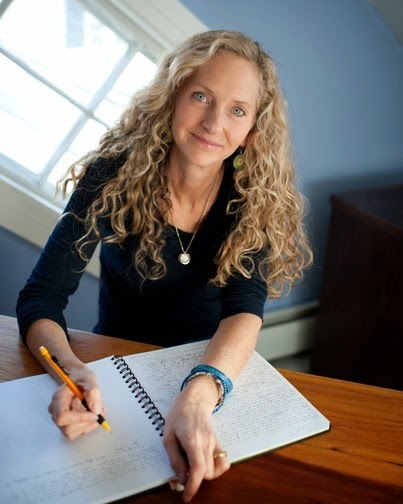
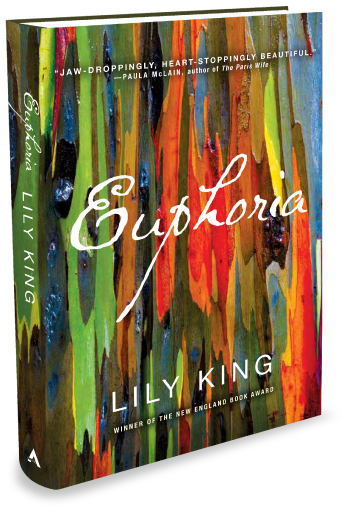
Lily King is the kind of writer other writers rhapsodize over. Fiercely smart, and deeply emotional, she's a keen observer of how people struggle to live their lives--and, of course, there is her glorious prose. Lily’s first novel, The Pleasing Hour (1999) won the Barnes and Noble Discover Award and was a New York Times Notable Book and an alternate for the PEN/Hemingway Award. Her second, The English Teacher, was a Publishers Weekly Top Ten Book of the Year, a Chicago Tribune Best Book of the Year, and the winner of the Maine Fiction Award. Her third novel, Father of the Rain (2010), was a New York Times Editors Choice, a Publishers Weekly Best Novel of the Year and winner of both the New England Book Award for Fiction and the Maine Fiction Award. Lily's new novel, Euphoria, is an Amazon Book of the Month, on the Indie Next List, and hitting numerous summer reading lists from The Boston Globe to O Magazine and USA Today. Reviewed on the cover of The New York Times Book Review, Emily Eakin called Euphoria, “a taut, witty, fiercely intelligent tale of competing egos and desires in a landscape of exotic menace.” The novel is being translated into numerous different languages and a feature film is underway.
Lily, thank you, thank you so much for being here.
I’m fascinated that your novel was inspired by Margaret Mead (A video on her in the Natural History Museum actually transfixed my son when he was a baby, so I have a special fondness foe for her.) What is about anthropologists that caught you? And about Mead’s life in particular? And how and why did you change the facts of her life to craft your novel?
I stumbled on this biography of Mead about nine years ago. I wasn't looking to write anything about her or anthropology. In fact I was just starting my third novel, Father of the Rain, so I wasn't even looking for an idea. But I started reading this biography and I got to the part when she was 31 and doing field work in what was the called the Territory of New Guinea with her second husband in 1933 and they meet this other English anthropologist, Gregory Bateson, and have this crazy five month love triangle in the jungle and I thought that would make a good novel. It was sort of an idle thought, not a real thought. I didn't think I'd actually write that novel. I thought the idea would go away. But it didn't. So I started reading more about and by Mead and Bateson and more ideas started coming, though I didn't actually commit to writing the novel for five years, after I'd finished Father of the Rain. I thought I was going to stay true to the facts of her life as best I could, but the minute I started writing scenes and dialogue my characters separated from their real-life inspirations and I couldn't really control them anymore.
What was the research like for this novel? What startled you about it? Was there anything you learned that turned what you thought you were going to write into something else entirely?
The research took years, though I did it intermittently as I wrote the third novel. It was hard to know when to stop, hard to make that transition from research to writing. I think the most startling thing was when I did start to write and I quickly realized it wasn't my character Nell's story. I thought she would narrate it, and she did for a while, until I shifted the point-of-view for one short chapter to Bankson's, and just felt him in a different way, so much more intimately, and I understood that it all had to be told in his voice. And that changed everything.
So much of this astonishing novel is about obsessions--for work and for love. Do you think obsessions can save us as well as destroy us? Which leads me to my next question--what’s obsessing you now?
The word obsession has unhealthiness built in, doesn't it? Everything else falls away, and perspective and relativity are lost. That very much happens to the characters in Euphoria. I'm sure there have been situations where obsessions save people, but I do think the real kind of obsession tends to destroy more often than not. Right now I am slightly, but not yet destructively, obsessed with a particular kind of potato doughnut in Portland, Maine called the "old fashioned" which you get at the Holy Donut on Exchange Street. Also this summer my husband, kids, neighbors and I have been playing way way too much of card game called Nerts.
There is also an equally fascinating thread about how we should (or shouldn’t) study other cultures, and if it is possible without disturbing those cultures in some way. Can you talk about this, please?
In 1933 Anthropology as a discipline taught at universities was still a young science, only a few decades old. Modern Western Anthropology grew out of colonialism and the contact the dominant powers made with indigenous populations. These populations were then studied, occasionally out of curiosity, but more frequently out of desire to subjugate. The way anthropologists in the early part of the twentieth century spoke of their "people" and their "village" using possessive pronouns and picking out a shoot boy and cook boy and house boy, was inherently colonialistic. My characters are still very much a part of this tradition, and yet Bankson of three is more aware of it, less comfortable with it, and much more cognizant that his presence is altering what he is observing. He is aware that his whiteness changes the way the people in the tribe he is studying behave.
What’s your writing life like? Do you plan things out or just see what happens?
I write only when my kids are at school. I don't work weekends or evenings, except when I'm about to hand in a draft to my agent or editor. Then I go up to the attic and don't come out, or I rent a cabin somewhere and work straight for several days.
When I start a book I have a few characters in my head, an initial situation they're in, and a sense of the emotional journey I want to take them on. I often know where I want the characters to end up emotionally, but I never know until I get there what exactly will happen to get them there. I take notes along the way, in the back of the spiral notebooks I write in, and then when they notes get unruly, I make a little timeline of moments I write towards. Not chapters or even full scenes, just little moments that help me know where to go next. I love the part when I type into the computer the chapters in my notebook. That's when I do my best editing. That's when I can hear it in a different way. It's a complete rewrite because I am re-writing every single word, not cutting or pasting or tinkering but fully re-writing.
What question didn’t I ask that I should have?
When I had my first reading of the tour in New York in June, my agent Julie Barer asked, "What was a high point and a low point of writing the book?" I think I said then, because the whole process of writing it was still so close to me, that there were no highs. I couldn't think of one! But the truth is that day when I wrote that short chapter in Bankson's point of view and was so stunned by the way it came out and how it changed everything about the book, that was a high. And then the rest of the time I felt the whole thing was impossible and terrifying.
Published on July 15, 2014 09:33
July 10, 2014
Rochelle Jewel Shapiro talks about What I Wish You'd Told Me, history, writing, and so much more
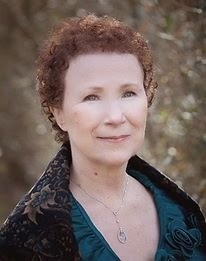
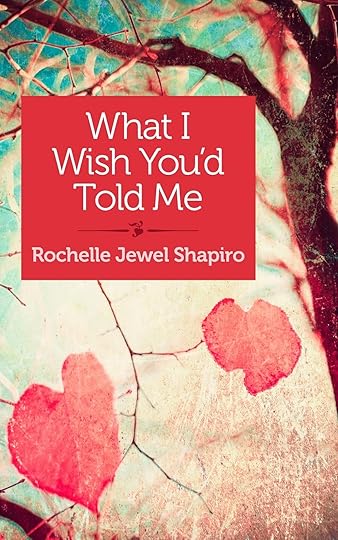
Rochelle Jewel Shapiro isn't just an acclaimed author--she's also one of my oldest, dearest, warmest and funniest friends. The author of Miriam the Medium (Simon & Schuster) and the Indie Finalist Kaylee’s Ghost (Amazon and Nook), she is now publishing with SheBooks, which puts out ebooks which can be bought through the company, through your favorite indie store, and wherever books are sold. What I Wish You’d Told Me is a collection of three stories of women of all ages grappling with the whacky and the tragic in their lives. Secrets, set in the sixties, is about a teenage girl whose illusions about her best friend’s family are blasted along with her faith in Kennedy’s Camelot. A Sympathetic Listener is about a twenty-four-year-old woman with cancer who, on her healing odyssey, finds connection and support from a most surprising source. In Great Aunt Mariah and the Gigolo, a seventy-something widow rocks the family when she brings home her young beau. All the stories are hilarious, sometimes heartbreaking, and absolutely wonderful.
Rochelle's first novel, Miriam the Medium, was nominated for the Harold U. Ribelow Award. Her novel Kaylee’s Ghost is an Indie Finalist. She’s published essays in the New York Times (Lives) and Newsweek, and in many anthologies. Her poetry, short stories, and essays have appeared in the Coe Review, Compass Rose, the Griffin, Inkwell Magazine, the Iowa Review, the Los Angeles Review, the MacGuffin, Moment, Negative Capability, Pennsylvania English, the Carolina Review, and more. She won the Brandon Memorial Literary Award from Negative Capability. Shapiro is a professional psychic who currently teaches writing at UCLA Extension. I'm thrilled to have Rochelle here. thank you, thank you, Rochelle!
In the three stories in What I Wish You’d Told Me, the characters are so real, so alive, that I can’t resist asking if they are based on people you know?
Bitsy pieces of people I’ve known or situations I’ve lived through or read about often braid their way into my fiction. For example, my big sister had a friend who looked like the angel on top of the Xmas tree with her spun gold hair, porcelain skin, and sky blue eyes. I used the girl’s physical self for Arianna in Secrets, but everything that happened to her and her best friend, Leah, took place in my imagination. My parents sometimes make appearances as they actually were, or some variation of their issues, such as a marriage of two people from different cultures. I guess I’m still trying to work out our relationship. On good writing days, I feel as if the characters actually speak to me, presenting themselves in mind-scenes and I’m just taking dictation. But I think themes are what catapult my characters—betrayal, disillusionment, desire for connection, losing and finding oneself. Once I know the themes, my characters’ motivations and destines, they breathe on the page.
The stories have a strong sense of place. What made you choose these settings?
Two of the stories in What I Wish You’d Told Me take place in the Rockways in Queens, New York. Like the child protagonist, Denise, in Great Aunt Mariah and the Gigolo, I was born in Rockaway Beach just up the block from the ocean in a gabled and domed summer mansion that had been carved into apartments once the rich and famous moved east. The air tasted like salt and rusted the finish off cars. I always heard the cry of gulls and the waves crashing against the jetties, lulling me like modern white noise machines. When we moved to Far Rockaway where Secrets is set, we were closet to the El where the A train rumbled by, but still within walking distance from the beach. Summer nights, we went to the boardwalk, my mother’s high heels getting stuck between the wooden planks, the crescent reflections of the moon rocking on the dark water. I could have never imagined myself living more than a few blocks from the sea as I do now.
But there were short-comings to living where everyone wanted to summer. Remote relatives of my mother would surprise us from England, and stay at least a month in our two-bedroom apartment that was already brimming with three little girls. I had to give up my bed and sleep in the hallway on two pushed-together chairs fitted out with pillows for a mattress. While second cousins sang Cockney ditties in our bathtub, my sisters and I had to take a bucket out to our second story porch to do our business.
For me, setting stories in Rockaway Beach and Far Rockaway is elegiac. That summer mansion where I first lived, the one with cement lions guarding the front door, and a frieze of panthers bordering the lobby walls, was razed by the wrecking ball of urban renewal just as so many blocks of bungalows were, and remained that way for years. Looking down from the El of the A train, it seemed as if a terrible war had been fought there, one that we lost.
And we had. Through red-lining, unscrupulous real estate agents who brokered fear of “the others” moving in, and the government corralling the poor into large housing projects that became permanent pockets of poverty and crime, my beloved neighborhoods became places where everyone who could afford to moved away left, and in a hurry.
But now, like the Phoenix rising from the ashes, young artists, surfers, entrepreneurs, have rediscovered its rare beauty, restoring Victorian houses, teaching yoga and surfing on the beach, giving art classes, growing corn in abandoned lots, and opening food concessions that draw long lines. A ferry now runs from the city to Rockaway. Rockaway, my Rockaway, our Rockaway, is coming back.
History, particularly the assassination of President Kennedy, plays a major role in Secrets, your first story. Are you a history buff?
History, for me, had been an Amsco Review Book. Anyone remember them? Terse summaries of major battles and political shifts, followed by questions that you could be sure would be on your next test, and even on the Regents Exams. Even though I had huddled under my desk in elementary school, my hands over my head to protect me in case an A-bomb fell, I didn’t understand it was part of an era that would become history. The closest I came to getting the impact of history on our personal lives was knowing my father’s horror in Russia, the pogrom he survived, how he escaped his burning village with the Cossacks’ dogs in pursuit, and his journey to America in steerage. But it wasn’t until my sixteenth birthday when President Kennedy was assassinated that I understood I was living through history. And then I began to read historical fiction, first person accounts of wars, the experiences of refugees, a wide range of newspapers, and I try to soak up pop culture. History gives resonance to my life and my fiction.
Great Aunt Mariah and the Gigolo is about a seventy-something widow marrying a forty-something year-old guy. No spoilers, but do you think, in life, that a marriage like that can work, given the age gap?
I did know a married couple where the man was forty-something and the woman seventy-something. She never wore makeup, dyed her hair, or tried to look younger in any way. They were both artists, he a collagist, she a photographer who published coffee table books. There was such tenderness between them.
“I’ve been to China twice,” Nelson once told me, “but never with Doris, so I want to go back to see it with her.”
And once they told me about how they phoned the pioneering artist, Alice Neel, may she rest in peace, got famous people to come to her studio to pose for her, and managed to talk them out of their clothing. Her painting of Warhol shirtless, the scar from his gallbladder surgery snaking down his midsection, is iconic. But she never got former Mayor of New York, Ed Koch, to disrobe. In fact, he kept his jacket and tie on, and his legs tightly crossed.
“Ms. Neel,” Nelson said, with Doris egging him on, “we’d like to come to your studio to pose for you. We’ll take off all our clothes.”
“No, thank you,” Alice Neel said.
“But my husband is thirty-five years younger than me,” Doris piped in. “Imagine what a nude portrait we’d make? And we’ll pose in any position you’d like.”
Alice Neel broke into hysterical laughter, but declined their offer. I bet if she weren’t already so elderly and crippled with arthritis, she would have done it, and Nelson and Doris would be hanging at the MOMA.
The last party I went to where I was expecting to see them, Nelson was there alone. “Doris isn’t feeling well,” he said sadly, “but she insisted that I come.” He left after twenty minutes. I haven’t kept in touch. I hope that Doris is all right. But I know she and Nelson will be together until death do them part. And isn’t that the best kind of love at any age?
What’s obsessing you now and why?
I have four young grandchildren now and five great nieces and a great nephew, and I would like to publish something that they all can read. But even in my comic stories, all my characters have problems that parents wouldn’t want their little kids knowing about, and most of my characters have sex. I mean, nobody asks Mrs. Cottontail how she got all her bunnies, do they? And as for a character overcoming life’s problems, not many of us have to worry about ending up in Farmer McGregor’s stew pot. Sure, the Grimm Brothers knew how to be grim, but today, kids’ mothers only read bowdlerized versions of the fairy tales to them. What if modern kids found out that Cinderella’s wicked stepmother handed her eldest daughter a knife and told her to cut her big toe off so her foot would fit the glass slipper? Once you become queen, you won’t have to walk anymore,” her mother advised. And when that daughter’s fraud was found out, and the prince rejected her, the stepmother turned to her younger daughter, again proffering a knife, and told her to cut off her heels.
Even Mother Goose has been plucked clean. Most nursery rhyme books change the words so that the woman who lives in a shoe doesn’t slap her children soundly. In most new version of Rockabye Baby, the cradle doesn’t even fall.
Oh, well, maybe something PG-rated will come to me. Any suggestions?
What questions didn’t I ask that you wish I had?
When will the film based on your last novel, Kaylee’s Ghost, be coming out? J
Published on July 10, 2014 10:08
Ellen Sussman writes about A Wedding in Provence, truth in fiction, and so much more

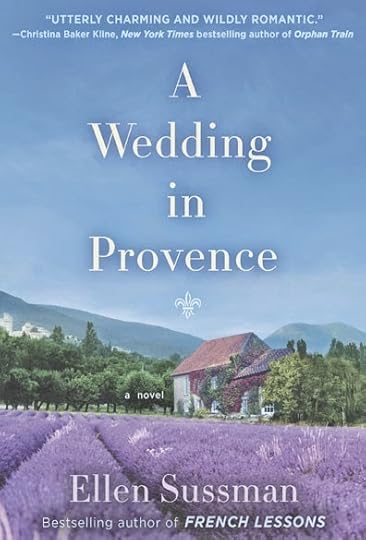
I'm so thrilled to have Ellen Sussman here! Ellen is the author of four national bestselling novels: A Wedding in Provence, The Paradise Guest House, French Lessons and On a Night Like This. All four books have been translated into many languages and French Lessons has been optioned by Unique Features to be made into a movie. Ellen is also the editor of two critically acclaimed anthologies, Dirty Words: A Literary Encyclopedia Of Sex and Bad Girls: 26 Writers Misbehave. She was named a San Francisco Library Laureate in 2004 and in 2009. Ellen has been awarded fellowships from The Sewanee Writers Conference, The Napoule Art Foundation, Hedgebrook, Brush Creek, Ledig House, Ucross, Ragdale Foundation, Writers at Work, Wesleyan Writers Conference and Virginia Center for the Creative Arts. She has taught at Pepperdine, UCLA and Rutgers University. Ellen now teaches through Stanford Continuing Studies and in private classes out of her home. She has two daughters and lives with her husband in the San Francisco Bay Area.
Thank you so much, Ellen!
True or FalseBy Ellen Sussman
Truth: I was married in France.Fiction: Olivia and Brody head to France to get married.Truth: I have two daughters, now 26 and 28Fiction: Olivia has two daughters, 26 and 28Truth: I found love the second time around.Fiction: Olivia found love the second time around.
And yet here’s one more truth: A Wedding in Provence, my new novel, is not autobiographical! Not even close. Nothing that happens in the novel happened in my life. And yet…
There is a lot of truth in my fiction.
I wanted to write a novel about finding love later in life. It seems a bit crazy to commit to marriage in your forties or fifties or sixties – by then you’ve learned so much about how marriages don’t work. I had been thinking about this a lot because I had done it myself. I fell madly in love with a guy and took that wild leap of faith. Love is complicated; love is messy and rich and fulfilling and infuriating. Love is a really good topic for a novel.
And I wanted to write about raising twenty-something daughters. They’re independent but they’re not. They’re easier but they’re not. They’re looking for love, careers, and a better relationship with each other. Great stuff for novel material.
But I didn’t write my own personal story. I invented characters that would fall into the complicated world of A Wedding in Provence. As a writer, I had a chance to grapple with all those conflicts while telling the story of someone else’s life. I’m not Olivia, my husband isn’t Brody and my daughters are nothing like Nell and Carly. (They even agree with me!) But my fictional characters and the fictional plot is infused with all of my musings about love and family.
I’ve written both fiction and memoir. These days I’m much more comfortable with fiction. And oddly I find that I can tell the truth more in fiction. Maybe it’s because I’m hiding behind my characters and an invented storyline. It’s safer than talking about my life. And I’m willing to dig deeper, to expose more.
It’s fiction. And it’s absolutely true.
Published on July 10, 2014 09:53
Sukey Forbes talks about The Angel in My Pocket, grief, possibility and healing
<!-- /* Font Definitions */ @font-face {font-family:Arial; panose-1:2 11 6 4 2 2 2 2 2 4; mso-font-charset:0; mso-generic-font-family:auto; mso-font-pitch:variable; mso-font-signature:-536859905 -1073711037 9 0 511 0;} @font-face {font-family:Wingdings; panose-1:5 0 0 0 0 0 0 0 0 0; mso-font-charset:2; mso-generic-font-family:auto; mso-font-pitch:variable; mso-font-signature:0 268435456 0 0 -2147483648 0;} @font-face {font-family:"MS 明朝"; mso-font-charset:78; mso-generic-font-family:auto; mso-font-pitch:variable; mso-font-signature:-536870145 1791491579 18 0 131231 0;} @font-face {font-family:"Cambria Math"; panose-1:2 4 5 3 5 4 6 3 2 4; mso-font-charset:0; mso-generic-font-family:auto; mso-font-pitch:variable; mso-font-signature:-536870145 1107305727 0 0 415 0;} @font-face {font-family:Calibri; panose-1:2 15 5 2 2 2 4 3 2 4; mso-font-charset:0; mso-generic-font-family:auto; mso-font-pitch:variable; mso-font-signature:-520092929 1073786111 9 0 415 0;} @font-face {font-family:Cambria; panose-1:2 4 5 3 5 4 6 3 2 4; mso-font-charset:0; mso-generic-font-family:auto; mso-font-pitch:variable; mso-font-signature:-536870145 1073743103 0 0 415 0;} /* Style Definitions */ p.MsoNormal, li.MsoNormal, div.MsoNormal {mso-style-unhide:no; mso-style-qformat:yes; mso-style-parent:""; margin-top:0in; margin-right:0in; margin-bottom:10.0pt; margin-left:0in; mso-pagination:widow-orphan; font-size:12.0pt; font-family:Cambria; mso-ascii-font-family:Cambria; mso-ascii-theme-font:minor-latin; mso-fareast-font-family:"MS 明朝"; mso-fareast-theme-font:minor-fareast; mso-hansi-font-family:Cambria; mso-hansi-theme-font:minor-latin; mso-bidi-font-family:"Times New Roman"; mso-bidi-theme-font:minor-bidi; mso-fareast-language:JA;} .MsoChpDefault {mso-style-type:export-only; mso-default-props:yes; font-size:10.0pt; mso-ansi-font-size:10.0pt; mso-bidi-font-size:10.0pt; font-family:Cambria; mso-ascii-font-family:Cambria; mso-ascii-theme-font:minor-latin; mso-fareast-font-family:"MS 明朝"; mso-fareast-theme-font:minor-fareast; mso-hansi-font-family:Cambria; mso-hansi-theme-font:minor-latin; mso-bidi-font-family:"Times New Roman"; mso-bidi-theme-font:minor-bidi; mso-fareast-language:JA;} .MsoPapDefault {mso-style-type:export-only; margin-bottom:10.0pt;} @page WordSection1 {size:8.5in 11.0in; margin:1.0in 1.25in 1.0in 1.25in; mso-header-margin:.5in; mso-footer-margin:.5in; mso-paper-source:0;} div.WordSection1 {page:WordSection1;} </style> --> <div class="MsoNormal" style="margin-bottom: .0001pt; margin-bottom: 0in; mso-layout-grid-align: none; mso-pagination: none; text-autospace: none;"><br /></div><div class="MsoNormal" style="margin-bottom: .0001pt; margin-bottom: 0in; mso-layout-grid-align: none; mso-pagination: none; text-autospace: none;"><br /></div><div class="MsoNormal" style="margin-bottom: .0001pt; margin-bottom: 0in; mso-layout-grid-align: none; mso-pagination: none; text-autospace: none;"><br /></div><div class="separator" style="clear: both; text-align: center;"><b style="mso-bidi-font-weight: normal;"><a href="http://2.bp.blogspot.com/-TRuNEAG0nms..." imageanchor="1" style="margin-left: 1em; margin-right: 1em;"><img border="0" src="http://2.bp.blogspot.com/-TRuNEAG0nms..." height="320" width="211" /></a></b></div><br /><div class="MsoNormal" style="margin-bottom: .0001pt; margin-bottom: 0in; mso-layout-grid-align: none; mso-pagination: none; text-autospace: none;"><br /></div><div class="MsoNormal" style="margin-bottom: .0001pt; margin-bottom: 0in; mso-layout-grid-align: none; mso-pagination: none; text-autospace: none;"><br /></div><div class="MsoNormal" style="margin-bottom: .0001pt; margin-bottom: 0in; mso-layout-grid-align: none; mso-pagination: none; text-autospace: none;"><br /></div><div class="MsoNormal" style="margin-bottom: .0001pt; margin-bottom: 0in; mso-layout-grid-align: none; mso-pagination: none; text-autospace: none;"><br /></div><div class="separator" style="clear: both; text-align: center;"><a href="http://1.bp.blogspot.com/-TIQEFJpzlr8..." imageanchor="1" style="margin-left: 1em; margin-right: 1em;"><img border="0" src="http://1.bp.blogspot.com/-TIQEFJpzlr8..." height="320" width="232" /></a></div><div class="MsoNormal" style="margin-bottom: .0001pt; margin-bottom: 0in; mso-layout-grid-align: none; mso-pagination: none; text-autospace: none;"><b style="mso-bidi-font-weight: normal;"><span style="color: #37103e; font-family: Arial; font-size: 13.0pt;">I imagine that writing this book was both painful--and deeply healing. Would you talk about that please?</span></b></div><div class="MsoNormal" style="margin-bottom: .0001pt; margin-bottom: 0in; mso-layout-grid-align: none; mso-pagination: none; text-autospace: none;"><br /></div><div class="MsoNormal" style="margin-bottom: .0001pt; margin-bottom: 0in; mso-layout-grid-align: none; mso-pagination: none; text-autospace: none;"><span style="color: #37103e; font-family: Arial; font-size: 13.0pt;">Yes, it was both painful and healing to writing this book.<span style="mso-spacerun: yes;"> </span>It was healing in that I had to revisit some of the ideas I had come to believe as truths through this process and get more information to back them up.<span style="mso-spacerun: yes;"> </span>It has also been healing sharing the book with people and getting the validation that the book helped them to heal as that was the goal of sharing my story.<span style="mso-spacerun: yes;"> </span>Knowledge is empowering and powerful and that helped me feel even more solid in my own path.<span style="mso-spacerun: yes;"> </span>But it was also painful to write this book.<span style="mso-spacerun: yes;"> </span>Grief never leaves us, we just learn to store it and manage it.<span style="mso-spacerun: yes;"> </span>There were particular spots in the book that brought me back to very dark places in my grief.<span style="mso-spacerun: yes;"> </span>Going to those places and writing about them was critical to the honesty of the story but it was difficult for me to step out of my new normal healthy and happy state of daily being and walk back through some of the dark days.<span style="mso-spacerun: yes;"> </span>I’m glad I did because the whole point of writing the book was to offer a story through grief and out on the other side that might help others but yes, the process of writing it was painful and difficult in many regards.</span></div><div class="MsoNormal" style="margin-bottom: .0001pt; margin-bottom: 0in; mso-layout-grid-align: none; mso-pagination: none; text-autospace: none;"><br /></div><div class="MsoNormal" style="margin-bottom: .0001pt; margin-bottom: 0in; mso-layout-grid-align: none; mso-pagination: none; text-autospace: none;"><b style="mso-bidi-font-weight: normal;"><span style="color: #37103e; font-family: Arial; font-size: 13.0pt;">One of the questions you ask is where has your daughter gone--and your answers are startlingly authentic, at least for me, and I imagine for very many people. Do you still the same way or have your feelings changed?</span></b></div><div class="MsoNormal" style="margin-bottom: .0001pt; margin-bottom: 0in; mso-layout-grid-align: none; mso-pagination: none; text-autospace: none;"><br /></div><div class="MsoNormal" style="margin-bottom: .0001pt; margin-bottom: 0in; mso-layout-grid-align: none; mso-pagination: none; text-autospace: none;"><span style="color: #37103e; font-family: Arial; font-size: 13.0pt;">As I write in the book, the day that I had my ‘aha’ moment with knowing that my daughter Charlotte was in a good place, separate and yet still with me, changed my whole course of grieving and then living.<span style="mso-spacerun: yes;"> </span>Life and death, I have come to believe, are just points on a continuum.<span style="mso-spacerun: yes;"> </span>I still hold that same belief system and it is positively reinforced regularly.</span></div><div class="MsoNormal" style="margin-bottom: .0001pt; margin-bottom: 0in; mso-layout-grid-align: none; mso-pagination: none; text-autospace: none;"><br /></div><div class="MsoNormal" style="margin-bottom: .0001pt; margin-bottom: 0in; mso-layout-grid-align: none; mso-pagination: none; text-autospace: none;"><b style="mso-bidi-font-weight: normal;"><span style="color: #37103e; font-family: Arial; font-size: 13.0pt;">What do you think is the one mistake people make about grief?</span></b></div><div class="MsoNormal" style="margin-bottom: .0001pt; margin-bottom: 0in; mso-layout-grid-align: none; mso-pagination: none; text-autospace: none;"><br /></div><div class="MsoNormal" style="margin-bottom: .0001pt; margin-bottom: 0in; mso-layout-grid-align: none; mso-pagination: none; text-autospace: none;"><span style="color: #37103e; font-family: Arial; font-size: 13.0pt;">Grief is not unrelenting sorrow.<span style="mso-spacerun: yes;"> </span>There are moments of lightness and laughter and those moments are almost more difficult than the deep sorrow because they feel, especially at first, totally wrong.<span style="mso-spacerun: yes;"> </span>But our bodies and we as living and thinking beings, are wired to be resilient.</span></div><div class="MsoNormal" style="margin-bottom: .0001pt; margin-bottom: 0in; mso-layout-grid-align: none; mso-pagination: none; text-autospace: none;"><br /></div><div class="MsoNormal" style="margin-bottom: .0001pt; margin-bottom: 0in; mso-layout-grid-align: none; mso-pagination: none; text-autospace: none;"><span style="color: #37103e; font-family: Arial; font-size: 13.0pt;">Along those lines, I think the other mistake people make about grief is that it undoes a person permanently.<span style="mso-spacerun: yes;"> </span>While grief does stay with us forever it also changes us and deepens us and leaves us wisdom as its gift.<span style="mso-spacerun: yes;"> </span>If we are open to the gifts in grief we emerge from it more solid, strong, loving and deep.</span></div><div class="MsoNormal" style="margin-bottom: .0001pt; margin-bottom: 0in; mso-layout-grid-align: none; mso-pagination: none; text-autospace: none;"><br /></div><div class="MsoNormal" style="margin-bottom: .0001pt; margin-bottom: 0in; mso-layout-grid-align: none; mso-pagination: none; text-autospace: none;"><b style="mso-bidi-font-weight: normal;"><span style="color: #37103e; font-family: Arial; font-size: 13.0pt;">What's your writing life like now? Do you have rituals? Do you outline or just follow your muse?</span></b></div><div class="MsoNormal" style="margin-bottom: .0001pt; margin-bottom: 0in; mso-layout-grid-align: none; mso-pagination: none; text-autospace: none;"><br /></div><div class="MsoNormal" style="margin-bottom: .0001pt; margin-bottom: 0in; mso-layout-grid-align: none; mso-pagination: none; text-autospace: none;"><span style="color: #37103e; font-family: Arial; font-size: 13.0pt;">I am a journaler.<span style="mso-spacerun: yes;"> </span>Most of my writing is seeking to understand.<span style="mso-spacerun: yes;"> </span>My way of exploring thoughts and ideas is usually on the page.<span style="mso-spacerun: yes;"> </span>It’s a physical exercise for me and I use a good old fashioned pen and spiral notebook.<span style="mso-spacerun: yes;"> </span>I’ll ask my self a question then sit and write non-stop for 10 minutes as a warm up and see what comes out on the page.<span style="mso-spacerun: yes;"> </span>I find my most honest writing appears that way.<span style="mso-spacerun: yes;"> </span>Some of it is not fit to be shared </span><span style="color: #37103e; font-family: Wingdings; font-size: 13.0pt; mso-ascii-font-family: Arial; mso-bidi-font-family: Arial; mso-char-type: symbol; mso-hansi-font-family: Arial; mso-symbol-font-family: Wingdings;"><span style="mso-char-type: symbol; mso-symbol-font-family: Wingdings;">J</span></span><span style="color: #37103e; font-family: Arial; font-size: 13.0pt;"></span></div><div class="MsoNormal" style="margin-bottom: .0001pt; margin-bottom: 0in; mso-layout-grid-align: none; mso-pagination: none; text-autospace: none;"><br /></div><div class="MsoNormal" style="margin-bottom: .0001pt; margin-bottom: 0in; mso-layout-grid-align: none; mso-pagination: none; text-autospace: none;"><span style="color: #37103e; font-family: Arial; font-size: 13.0pt;">I am terribly undisciplined about my scheduled writing but my best work happens early in the morning before the kids are awake, often even before the birds are awake, when it is quiet both in the house and in my mind.</span></div><div class="MsoNormal" style="margin-bottom: .0001pt; margin-bottom: 0in; mso-layout-grid-align: none; mso-pagination: none; text-autospace: none;"><br /></div><div class="MsoNormal" style="margin-bottom: .0001pt; margin-bottom: 0in; mso-layout-grid-align: none; mso-pagination: none; text-autospace: none;"><span style="color: #37103e; font-family: Arial; font-size: 13.0pt;">No, I do not outline.<span style="mso-spacerun: yes;"> </span>I probably should.<span style="mso-spacerun: yes;"> </span>But my writing comes from deep within and I find that if I try too hard to structure it that it is more difficult for my true voice to emerge.</span></div><div class="MsoNormal" style="margin-bottom: .0001pt; margin-bottom: 0in; mso-layout-grid-align: none; mso-pagination: none; text-autospace: none;"><br /></div><div class="MsoNormal" style="margin-bottom: .0001pt; margin-bottom: 0in; mso-layout-grid-align: none; mso-pagination: none; text-autospace: none;"><b style="mso-bidi-font-weight: normal;"><span style="color: #37103e; font-family: Arial; font-size: 13.0pt;">What's obsessing you now and why?</span></b></div><div class="MsoNormal" style="margin-bottom: .0001pt; margin-bottom: 0in; mso-layout-grid-align: none; mso-pagination: none; text-autospace: none;"><br /></div><div class="MsoNormal" style="margin-bottom: .0001pt; margin-bottom: 0in; mso-layout-grid-align: none; mso-pagination: none; text-autospace: none;"><span style="color: #37103e; font-family: Arial; font-size: 13.0pt;">I’m actually quite focused on the<i style="mso-bidi-font-style: normal;"> gifts</i> of grief.<span style="mso-spacerun: yes;"> </span>The conversation about how we move through grief as a culture and individually is evolving.<span style="mso-spacerun: yes;"> </span>I think too much literature on the grief process in the past 60 years has been written by health professionals who are dealing with people in protracted states of grief rather than by people who have found coping skills and tools to work their way through the grief and back to a full life.<span style="mso-spacerun: yes;"> </span>There are great life lessons in grief and not a lot of time has focused on them.<span style="mso-spacerun: yes;"> </span>I don’t by any measure mean to imply that grief is easy.<span style="mso-spacerun: yes;"> </span>It is not.<span style="mso-spacerun: yes;"> </span>It is gut wrenching, and complicated, and painful, and confusing and we all go through it differently.<span style="mso-spacerun: yes;"> </span>BUT WE ALL EMERGE and I want to be a part of the underscoring of the message that <i style="mso-bidi-font-style: normal;">we all emerge</i>.<span style="mso-spacerun: yes;"> </span>We all are programmed to be resilient.<span style="mso-spacerun: yes;"> </span>We all survive, and thrive, and if we are open to it, we are better people, parents, partners, citizens of the world for having experienced that depth of sorrow.</span></div><div class="MsoNormal" style="margin-bottom: .0001pt; margin-bottom: 0in; mso-layout-grid-align: none; mso-pagination: none; text-autospace: none;"><br /></div><div class="MsoNormal" style="margin-bottom: .0001pt; margin-bottom: 0in; mso-layout-grid-align: none; mso-pagination: none; text-autospace: none;"><b style="mso-bidi-font-weight: normal;"><span style="color: #37103e; font-family: Arial; font-size: 13.0pt;">What question didn't I ask that I should have? </span></b></div><div class="MsoNormal"><span style="color: #1c3a68; font-family: Calibri; font-size: 15.0pt; mso-bidi-font-family: Calibri;"> What makes your book unique? </span></div><div class="MsoNormal"><span style="color: #1c3a68; font-family: Calibri; font-size: 15.0pt; mso-bidi-font-family: Calibri;">Are you happy?<span style="mso-spacerun: yes;"> </span>Do you believe in God?</span></div>
Published on July 10, 2014 09:48
July 6, 2014
Chris Bohjalian talks about Close Your Eyes, Hold Hands, nuclear power plants, how being the dad of a daughter sparked the book, and so much more
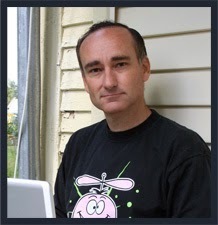
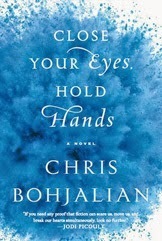
Chris Bohjalian may just be one of the kindest, most generous authors around. He's the kind of writer that when you do an event with him, though it's obvious that 450 of the 500 people in the audience are there for him, he makes you feel that they're there for you, too, and he even holds up your book and exhorts everyone to buy and read it. He's the critically acclaimed author of 17 books, including nine New York Times bestsellers. His work has been translated into over 25 languages and three times become movies, and they've been chosen as Best Books of the Year by the Washington Post, the St. Louis Post-Dispatch, the Hartford Courant, Publishers Weekly, Library Journal, Kirkus Reviews, Bookpage, and Salon.
You want to talk awards? Chris' include the ANCA Freedom Award for his work educating Americans about the Armenian Genocide; the ANCA Arts and Letters Award for The Sandcastle Girls, as well as the Saint Mesrob Mashdots Medal; the New England Society Book Award for The Night Strangers; the New England Book Award; a Boston Public Library Literary Light; a finalist for the Lambda Literary Award; and the Anahid Literary Award. His novel, Midwives, was a number one New York Times bestseller, a selection of Oprah's Book Club, and a New England Booksellers Association Discovery pick. He is a Fellow of the Vermont Academy of Arts and Sciences, too.
His dazzling new novel, Close Your Eyes, Hold Hands, is about homeless teen girl, a nuclear meltdown, and how we feed our need for connection--and of course, it's about much, much more. Thank you so much, Chris for being here! I'm so jazzed to host you!
I remember you talking about the research you did about plane crashes, and how in depth it was, so I cannot wait to hear you talk about the research you did for Close your Eyes, Hold Hands. What did you learn about nuclear power that startled you? About teens fighting mental illness? And should we be worried about nuclear plant accidents more than we already are?
Sometimes my books demand a lot of research. But “Close Your Eyes, Hold Hands?” Not so much. The creation of Emily Shepard’s voice was. . .alchemic. It really was. The only other time I was so sure of a voice so quickly was years ago: Connie Danforth in “Midwives.”
Part of the reason why I found the voice so easily, I believe, is that I have written about teens in trouble often over the years as a Burlington Free Press columnist. I’m a big fan of Spectrum Youth Camp; Family Services in Burlington, Vermont and the remarkable work they do, and so I’ve met a lot of their kids. I’ve heard the teens’ stories and seen their faces. I’ve met the kids who are going to be okay, and the kids who are already so far down the rabbit hole that there’s no coming back.
I also know some of their staff. I went to college with Annie Ramniceanu, for instance, their associate executive director and an immensely gifted therapist and counselor. One day when I was having lunch with her, she started telling me how some of the kids – the teens who are falling through the system – would build igloos against the Vermont cold out of trash bags filled with wet leaves, and I knew instantly the novel I wanted to write.
As my 20-year-old daughter, Grace, would tell me when she finished reading the first draft, “Dad, please take this as a compliment, because I mean it that way: Your sweet spot as a novelist is seriously messed up young women.” I know she’s right.
And I did learn a bit about how nuclear plants work – thanks to Arnie and Maggie Gundersen at Fairewinds Energy Education. But I really find nuclear power absolutely baffling. Their website is incredibly interesting ( www.fairewinds.org ).
And, yes, nuclear power does make me nervous. The exclusion zone in my novel in Vermont is small compared to the actual exclusion zone around the Fukushima Daiichi plant in Japan.
You get so deeply into the head of Emily that it feels as if you are channeling her. How did you do such alchemy? (P.S. I know the answer to this, but I love it so much that I want you to talk about it.)
Part of it was the voices of all those teens I have interviewed over the years. I still have the articles and my memories of their stories remain vivid.
And part of it was my own daughter, Grace. I can’t count how many times I would be failing to find the right synonym for a word or to capture the perfect expression a really smart sixteen or seventeen year old girl would use, and so I would text her. I would ask her questions like, “What’s a hip synonym for ‘tattoo?’” Or “I need another expression for ‘wasted.’ Any suggestions?” And she would text me back whatever words made sense in context. Trust me, you would not have found the word “bitchcakes” in the novel without her. She was amazing.
And, finally, I focused a lot on the universals of age, not necessarily the particularities of gender. It is how I have written across gender in the past, and how I imagine I will in the future.
To me, this book feels different than any of your others, which leads to the question, what sparked the writing? What was haunting you that made you want to write this particular novel?
First of all, thank you. I never want to write the same book twice.
And what sparked the writing? I’m a dad of a daughter. The idea of a teen girl living alone in an igloo made of trash bags and wet leaves broke my heart. That image indeed haunted me – and spurred me on.
I have to say that the title is one of the most moving and greatest titles I’ve read in a long time. Did you always know that would be the title? Are titles difficult for you?
As Emily Dickinson wrote, “Tell all the Truth but tell it slant.”
That is definitely how my Emily Shepard writes and thinks. There is a slant to her story – and an edge to her prose.
And the words that comprise the title? They sound, she reminds us, like something we might read on a drugstore greeting card. Maybe the accompanying image is a couple holding hands as they jump off a dock into a placid lake one beautiful August afternoon. But, of course, their origin is far darker. Far sadder.
And that is the truth of my poor Emily’s life.
As for titles: They are usually really difficult for me. I agonize. I struggle.
But in this case? Not at all. I knew the title for this novel early on.
What’s obsessing you now and why?
I am writing a novel about sex trafficking and, yes, I have grown very protective of this character, too.
But it’s the summer. If I am obsessed with anything, it’s my biking.
Published on July 06, 2014 10:41
Jo-Ann Mapson talks about Owen's Daughter, Santa Fe, Italian greyhounds, and so much more
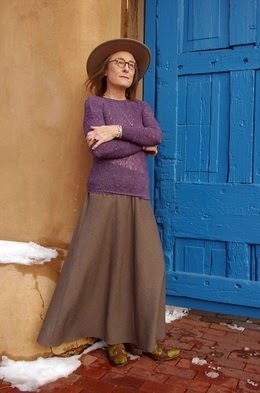
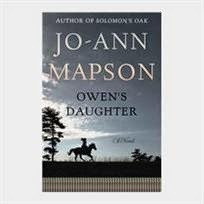
Want to know whom I credit for my Old Gringo cowboy boot addiction? My friend, writer Jo-Ann Mapson. Back when email first started, I tracked her down, wrote to her, and virtually insisted that she befriend me--and she has, through the years offering love, support, humor and tips on boots! Jo-Ann is the author of eleven novels and a book of short stories. Her work is widely anthologized and her literary papers are being collected by Boston University’s Twentieth Century Author’s Collection. Hank & Chloe was her debut novel. Blue Rodeo was made into a CBS TV movie starring Kris Kristofferson. The Wilder Sisters and Bad Girl Creek were Los Angeles Times bestsellers. Solomon’s Oak won the American Library Association’s RUSA award for women’s fiction. Many of her books have been Booksense titles and Indiebound choices. Her wonderful new novel, Finding Casey, featuring some of the characters from Solomon’s Oak, will be published October 2012.
Thank you so much, Jo-Ann--for this interview and for everything.
The questions I always ask are what sparked this particular book and did anything surprise you in the writing?
I’ve wanted to write the sequel to Blue Rodeo for twenty years. This book is kind of a kind of sequel, but also a stand-alone story, and it fits into Solomon’s Oak and Finding Casey as well. I placed my BR character Margaret Yearwood as Glory & Joe Vigil’s next door neighbor in Finding Casey. Maggie often babysits their children--the Vigils’ five-month-old daughter Sparrow, and Aspen, their “adopted” granddaughter. Aspen is a handful. She’s also kind of psychic.
Your characters are always so blazingly alive. What kind of character work do you do?
I love to people watch, eavesdrop on conversations, and in that foggy-not-quite-clear thinking state, I imagine my characters driving, eating at one of the many interesting restaurants here, splurging on a pair of Old Gringo cowboy boots downtown, or waiting for various appointments, being annoyed by Santa Fe wind, and the loneliness people feel at whatever age. I think a lot of people are quite lonely in our current world. Loneliness can lead to some foolish choices. I also love to write about romance, but realistically, and for me that means timeworn parts and issues are involved. In Owen’s Daughter, Maggie finds out she’s in the early stages of a serious disease, just days before her grown son Peter arrives with his own suitcase of troubles. Skye, Owen’s daughter, is freshly out of rehab at the ripe old age of 22, and going through a divorce. Her addiction problems stem from bad parenting, a bad marriage, and having a child at age eighteen. Sounds awful, but I love to weave stories around real life problems. I think that makes the payoff much more rewarding.
What do you hope readers come away with?
A fervent desire to purchase all my novels, make them into Hollywood movies, and tell everyone else about this writer they must read. Nothing makes my day when I hear from a reader who enjoyed my book, and to hear that reading got them through a rough day, or year.
What's your writing life like these days?
I live 20 minutes out of Santa Fe proper, on a dirt road with lots of solitude. I write every day, correspond with my MFA low residency students, I walk the dogs and ponder aging, and dislike the wind. Facebook has given me a community even when I’m alone in my office, which I truly enjoy. Occasionally, a Facebook friend will say, “Wait, are you the Jo-Ann Mapson who writes books? I thought you were just a greyhound person.” It makes me laugh. Can’t I be both? Aging is weird. My mom is almost 92, still lives in So. California, drives her BMW, plays bridge, and tells me what to do. Her best friend died this year, and I think those losses when we’re older, are just devastating. I decided that I couldn’t bear Opal going away for good, so I made her a character in this book, and in the one I’m currently working on.
What's obsessing you now and why?
The book I’m working on now is based on a true story, and was the very first novel I ever tried to write. I failed miserably at it, thank goodness, because I’ve had so much time to let it percolate. It requires massive research, some international travel, and more solitude than anything else I’ve ever written.
What are you doing for fun?
I rescued an Italian greyhound from Hobbs, NM, named her Chick-lit. She is a handful. First female IG I’ve ever had. Very high prey drive. That’s four dogs now, and it’s like living with a posse of clowns. Henry just sauntered in wearing a pair of my underwear. God knows how he got them on. He looks both humiliated and quite proud. Dogs are just amazing to me, as are horses, and birds. I love to put animals in my books. Dogs, cats, horses, whatever, are neutral love objects. People often communicate through them. When I finish a book, I like to make jam. Tomorrow I’ll be peeling Meyer lemons and oranges for marmalade.
What question didn't I ask that I should have?
Why hasn’t Oprah called?
Published on July 06, 2014 10:29
July 2, 2014
High school hazing, nuns and the funniest dialogue since Richard Price's The Wanderers-- Anthony Breznican talks about his mind-blowingly good debut, BRUTAL YOUTH
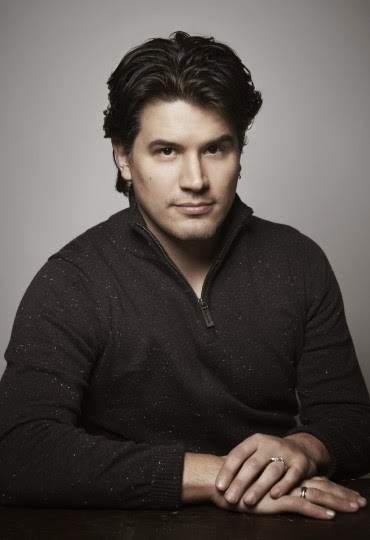
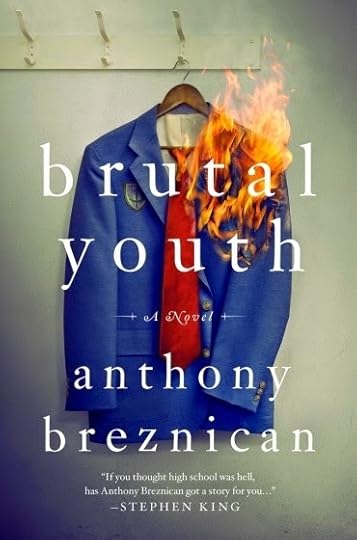
Every once in a while I start reading a book that I think speaks exactly to me. As someone who endured a harrowing high school life, I was immediately drawn to Anthony Breznican's Brutal Youth (great title and brilliant cover, too, by the way). The world he creates is so real, that if you take your eyes off the page (go ahead, I dare you), you'll feel disorientated. Breznican's characters, are each so bristlingly alive, you'd swear they were tugging at your arm, spilling their stories. Heartbreaking, funny, boldly imaginative, cruel and gentle, too, Brutal Youth stuns. Anthony has worked as a reporter for The Arizona Republic, Associated Press, and USA Today, and is currently a senior staff writer for Entertainment Weekly, and I'm so honored to have him here.
Brutal Youth has one of the most astonishing openings I've read in a long while. Did that opening come to you originally, or did it come after you had written parts of the book?
I always knew I wanted to start with something intense and visceral - a real grab-you-by-the-collar opening that would thrust you into a school where the danger wasn't getting a good grade, or getting a date ... It's basic survival. I'd heard this story from my own high school about a kid who flipped out in the hall after many years of being teased and tormented. He started swinging his bag in a circle, and clobbering anyone who got near. I heard one of the teachers jumped on his back, and then rode him around like it was a rodeo when even that didn't slow him down. As another kid who carried his whole locker in his book bag, I wondered: what could have made him snap? We all face hard times and feel angry and powerless, but what makes someone really lose it and switch from trying to lay low to trying to cause pain. I amped up that old legend, added what I'd consider kind of a horror element to illustrate that this was a story with fangs. But sadly, we've seen plenty of instances over the years where a kid goes over the edge and causes much more catastrophic damage.
Which, of course, leads to a structure question. Did you plan out this book or just follow the characters to see where they might lead you?
I knew I wanted to write about four main freshmen -- Davidek, a nice kid who just wants to avoid trouble; Stein, who loves trouble and fights every good fight; Lorelei, who is desperate to be liked (but doesn't like herself very much) and Green, who charms his way to safety, but loses touch with where he came from. After that, the story unfolded as I threw a lot of menace, mistrust, and double-crossing at them in the form of adults who have a lot of growing up to do, too. \
I always want to know what sparked a book, what was haunting you that nudged you into writing this?
I wanted it to be a war story about trying to save yourself, but maybe losing yourself along the way. I was a feisty, rebellious kid and I have a soft spot for troublemakers. I also have a pretty big problem with authority. Haven't we all witnessed people in charge who probably shouldn't be? BRUTAL YOUTH came from my efforts to write a coming-of-age story that was also a thriller. Hopefully it also has something to say about the forces that shape us (or warp us) when we're young.
As someone who was bullied in junior high and high school (I narrowly escaped being beaten up for wearing a beaded headband (don't ask) because the girl was caught calling in a phony bomb threat and was expelled), I still remember all the humiliations and violence--and your book brought them all vividly to life. Were you bullied as a kid? What was it like writing this book and living with all that brutal growing-up?
A beaded headband? Clearly you had it coming! I joke, but that's because some of these experiences seem so absurd once you get some distance on them. But at the time they are terrifying -- and it feels like there is no escape. I was pushed around, chased around, and beaten up from time to time. (That's an occupational hazard when you are a teenage wise-ass.) What's worse is when you are being emotionally or psychologically harassed by an adult -- teacher, parent, bus driver, whomever -- and that happens ALL THE TIME, whether we like to admit it or not. I've read some criticism of the book where people say, "oh, this kind of thing could never happen. It's unbelievable." Really? Because do a google news search of bullying in high school, and see what turns up. BRUTAL YOUTH is fiction, and compounds a lot of these stories in one particularly bad environment, but I just saw a news report about a middle school teacher caught on video grabbing a boy by the face and shoving him into a wall. Saying things like, "no, someone would step in and stop this" assumes someone is paying attention. And sadly, most of the cruelty out there doesn't end up on video.
Despite the brutality, the book is also ragingly funny, and spot on about the way kids think and talk, with an eye for dialogue that I thought rivaled Richard Price's in The Wanderers. How did you go about creating your characters?
I'm really glad you feel that way. I worry that amid all the talk of the heavier elements of the book, it sounds like a painful slog. I definitely wanted to break the reader's heart at times, but I also wanted them to feel it is a white-knuckle ride, and to laugh a bit at the way deep, dark trouble often comes full circle into absurdity. One of the characters who seems a little unbelievable in BRUTAL YOUTH is the parish priest, who is literally skimming cash out of the collection plate to fund a gambling addiction. Well ... That was inspired by a real guy from my school's church, who got caught after pinching about $1.3 million from the parish. It's insane, and funny in a kind of head-shaking way. Who could be that sinister? But it also happens to be true. Life is funny, sad, infuriating, and baffling -- sometimes all at once.
What's your writing life like?
I work full-time as a reporter covering the film beat for Entertainment Weekly, so I spend a lot of time telling the stories of other storytellers. I was drawn to that because I've always wanted to tell one of my own. My wife is a librarian and when she was pursuing her masters I found myself with a lot of free time. BRUTAL YOUTH was written at the kitchen table while she studied at the desk in our one-room apartment. I always wanted to give her a book to catalog that was written just for her. And here it is.
What's obsessing you now and why?
We have two little kids now, an infant son and a daughter who is about to go into kindergarten. They keep me pretty occupied! Obviously, empathy is a big deal with me, and I want them to grow up and be strong, yes, be smart, absolutely, but most of all I want them to be good. Now that my daughter is almost 5, she's one of the big kids in her pre-school class. I've learned that she is one of the biggest defenders of the little 3-year-olds who are just entering the group. She welcomes them, befriends them, watches out for them amid the roughhousing of the big kids. I'm obsessed with these stories! It's scary to start out somewhere, whether it's pre-school or a new job. I'm proud my little girl knows that, even at such a young age, and tries to make it not so scary for others. It's making me rethink my dark, twisted, and cynical view of the world!
Published on July 02, 2014 08:55



